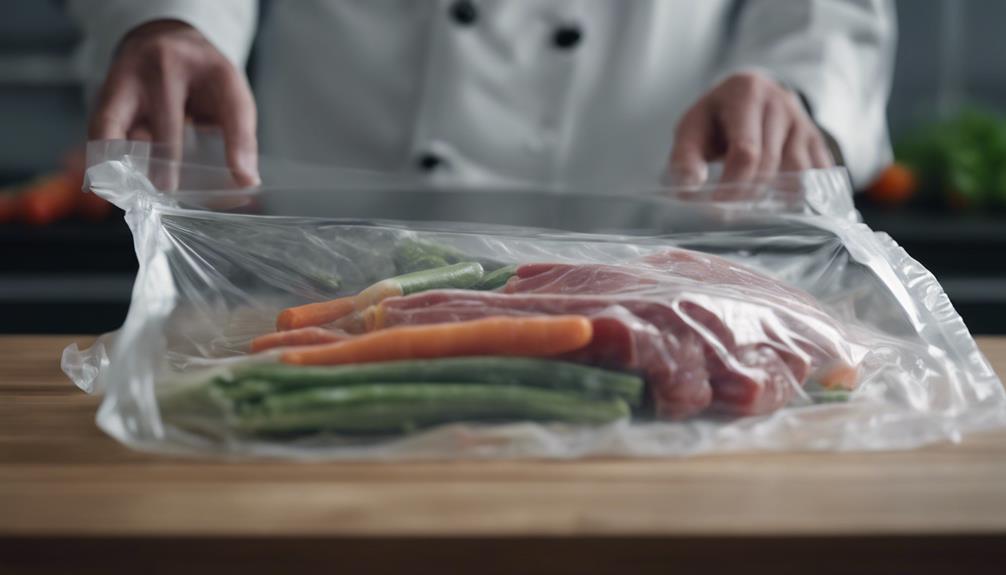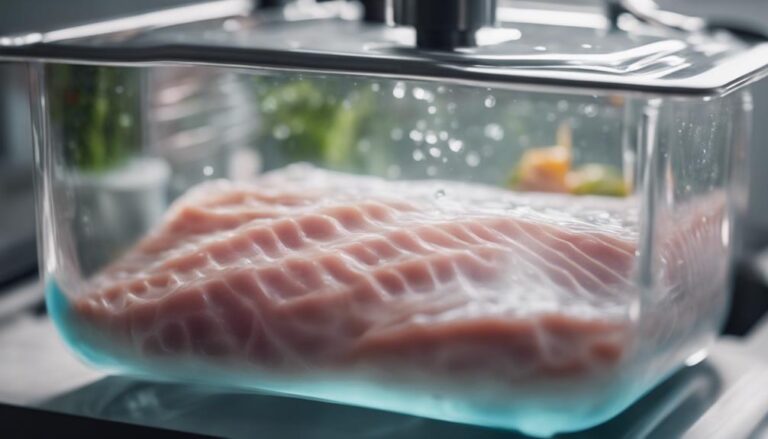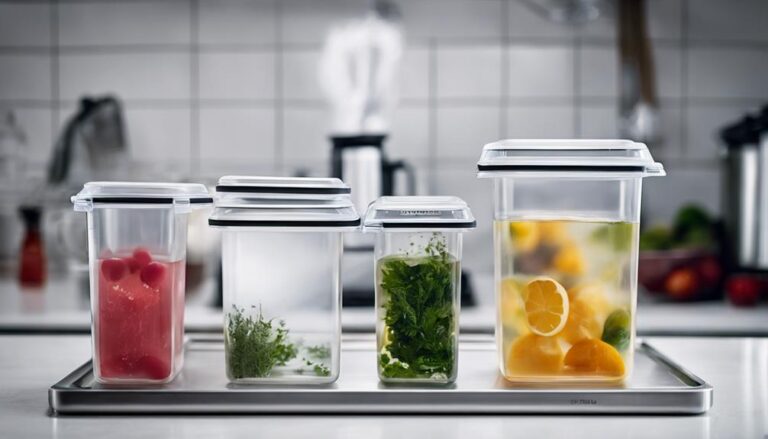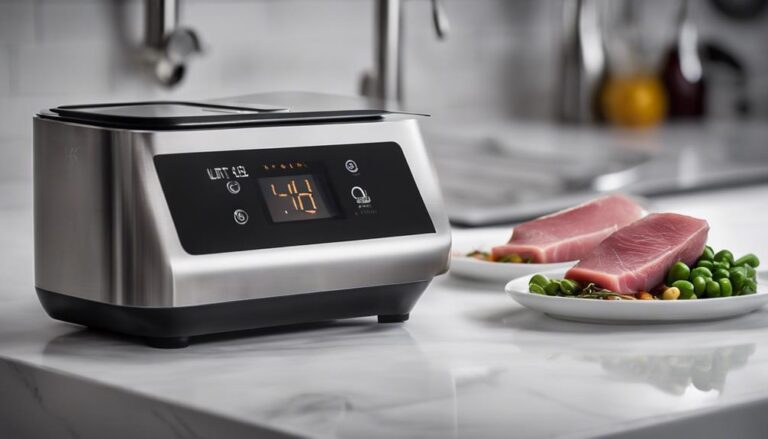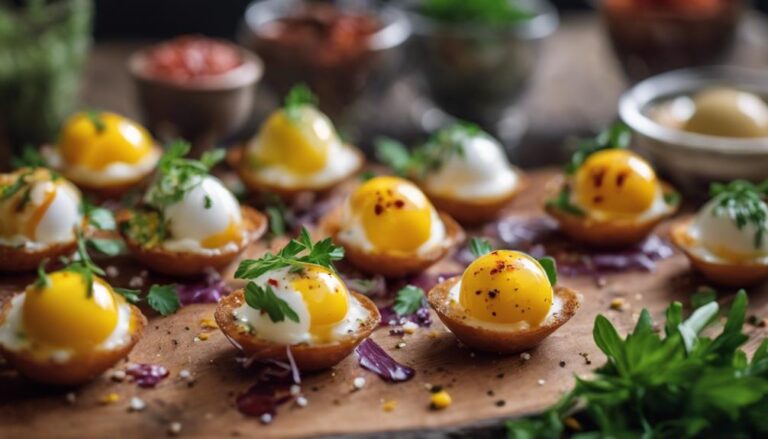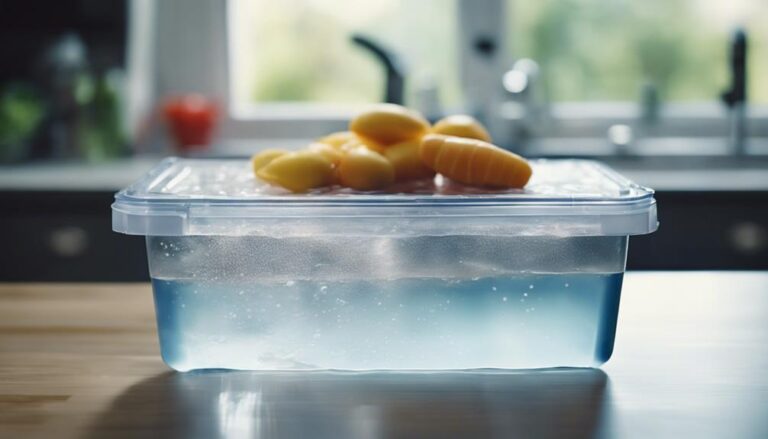Vacuum Sealing Made Simple: Preparing Your Ingredients for Sous Vide
Master vacuum sealing to harness your ingredient's full potential in sous vide. Seal completely, optimize transfer to enhance flavors, prioritize safety. Season before sealing to absorb flavors, distribute evenly, and elevate taste. Understand the importance of vacuum sealing for ideal water bath submersion, airtight environment, and nutrient preservation. Choose the right sealer—chamber for large quantities or an external for cost-effective sealing. Both maintain ingredient integrity. Elevate your sous vide game by perfecting your vacuum sealing technique.
What You Will Learn Here
- Choose the right vacuum sealer for sous vide cooking.
- Ensure a complete seal to prevent water entry.
- Season ingredients before vacuum sealing for maximum flavor absorption.
- Optimize heat transfer by removing air pockets.
- Prioritize food safety by following proper sealing techniques.
Importance of Vacuum Sealing for Sous Vide
Vacuum sealing plays an essential role in sous vide cooking by ensuring ideal water bath submersion for ingredients. When you vacuum seal your food for sous vide, you create an airtight environment that prevents air from interfering with your cooking process. By removing the air from the package, vacuum sealing eliminates the possibility of bags floating and guarantees that your food cooks evenly in the water bath. This airtight seal also helps in preserving the flavors and nutrients of your ingredients, ensuring a delicious end result.
In sous vide cooking, there are two main types of vacuum sealers: chamber sealers and external sealers. Chamber sealers, perfect for high-volume sealing, excel in handling liquid marinades due to their ability to control the vacuum strength effectively. On the other hand, external sealers are more cost-effective and easier to use, although they may have limitations when it comes to sealing liquid marinades securely. Both types of sealers contribute to the success of your sous vide cooking by maintaining the integrity of your ingredients in a sealed environment.
Choosing the Right Vacuum Sealer
What key factors should you take into account when choosing a vacuum sealer for your sous vide cooking requirements?
When selecting a vacuum sealer for your sous vide experiences, it's vital to determine whether you need a chamber vacuum sealer or an external vacuum sealer. Chamber vacuum sealers are excellent for handling large amounts of sealing and are perfect for use with liquid marinades because of their ability to manage vacuum strength, sealing time adjustments, and pressure adjustments.
On the other hand, external vacuum sealers are more cost-effective and simpler to set up. They're effective for general sealing tasks but may have limitations when sealing liquid marinades. Both types of sealers make certain that your ingredients are fully immersed in water, a critical component for successful sous vide cooking.
Take into account your specific requirements and the amount of sealing you anticipate doing to make the optimal choice for your sous vide preparations.
Tips for Properly Sealing Ingredients
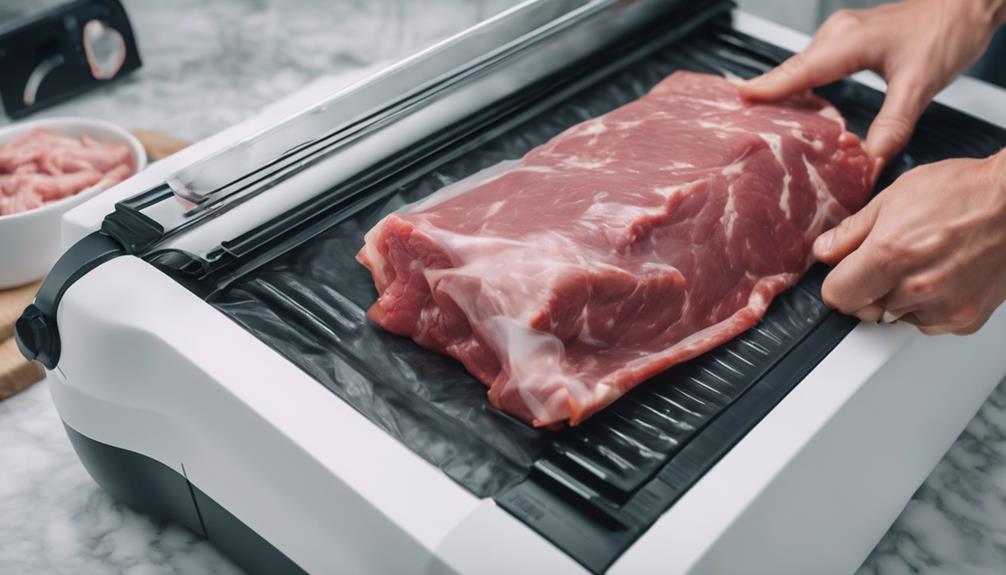
To guarantee successful sous vide cooking, mastering the art of properly sealing your ingredients is essential. Follow these tips to ensure your ingredients are sealed correctly:
- Seal with Care: Make sure to seal the food pouch completely to prevent any water from entering during the cooking process. This will help maintain the integrity of your ingredients.
- Optimize Heat Transfer: Proper sealing ensures efficient heat transfer, allowing the ingredients to cook evenly. Avoid any air pockets in the pouch for best heat distribution.
- Prioritize Food Safety: Maintaining food hygiene is critical. Seal ingredients properly to prevent any contamination and preserve freshness and flavor throughout the cooking process.
Seasoning Techniques for Sous Vide
Enhancing the flavor profile of your sous vide dishes begins with mastering effective seasoning techniques before vacuum sealing. Seasoning your ingredients before vacuum sealing is important for maximizing flavor absorption in sous vide cooking. By coating meats with spices or marinades before sealing, you guarantee that the flavors are evenly distributed throughout the food. Vacuum sealing plays a major role in helping the spices penetrate the meat, resulting in a more flavorful outcome when cooking sous vide.
Pre-seasoning your ingredients before sous vide cooking not only saves time but also enhances the taste of your dishes. Proper seasoning techniques before vacuum sealing contribute greatly to the overall deliciousness of the final dish. Whether you prefer using dry spices or flavorful marinades, making sure that your ingredients are properly seasoned before vacuum sealing will elevate the taste and quality of your sous vide creations.
Best Practices for Vacuum Sealing

For optimal results in sous vide cooking, mastering best practices for vacuum sealing is crucial. To guarantee your ingredients are perfectly prepared for the sous vide process, follow these key steps:
- Complete Submersion: Vacuum sealing your ingredients allows for total immersion in water, ensuring even cooking throughout.
- Air Removal: By eliminating air from the package, you prevent floating and ensure consistent cooking temperatures for a delicious outcome.
- Choose the Right Sealer: Consider using a chamber sealer for larger quantities and liquid marinades, as it provides better control over the vacuum strength. On the other hand, external sealers are more cost-effective and easier to use but may struggle with effectively sealing packages containing liquid marinades.
Frequently Asked Questions
Should You Vacuum Seal Before Sous Vide?
Yes, you should vacuum seal before sous vide for time-saving benefits, flavor retention, moisture control, and safety precautions. Air removal enhances texture, and it's a sous vide hack for the best results. Choose a vacuum sealer based on your needs for ingredient compatibility and sous vide advantages.
What Is the Sous Vide Setting on a Vacuum Sealer?
For sous vide cooking, the sous vide setting on a vacuum sealer eliminates air from the bag before sealing. It guarantees airtightness, maintaining consistent temperatures for even cooking. Enhancing flavors and juiciness, it's essential for delicious results.
How Do You Prepare Food for Vacuum Sealing?
To prepare food for vacuum sealing, start by marinating meat, blanching vegetables, preserving fruits, infusing herbs, aging cheese, reducing sauces, storing nuts, sealing gravy, freezing soups, and portioning pasta. These steps enhance flavors and freshness.
How Do You Vacuum Seal Chicken for Sous Vide?
To vacuum seal chicken breasts for sous vide, season them first. Place in a Ziploc bag, remove air, and seal with a vacuum sealer. Consider brining or marinating for added flavor. Achieve precise temperature control, ensuring tender results.
Conclusion
Now that you understand the significance of vacuum sealing for sous vide and how to correctly seal your ingredients, you're prepared to enhance your cooking game.
By selecting the appropriate vacuum sealer, mastering seasoning techniques, and adhering to best practices, you can guarantee that your sous vide dishes turn out flawlessly every time.
So go ahead, get sealing, and get ready to impress with your delectable creations. Happy cooking!
